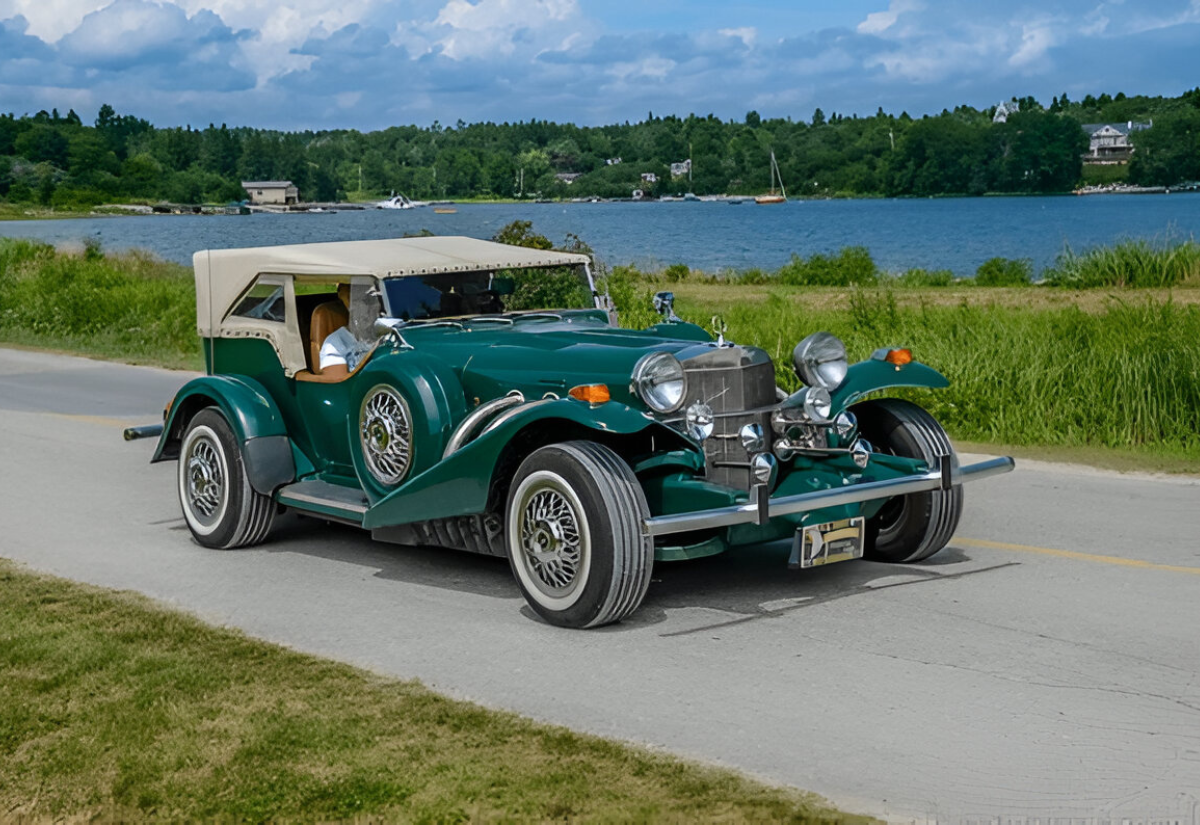The Excalibur car is one of the most recognizable luxury automobiles ever produced, admired for its distinctive design that mixes vintage style with modern engineering. With roots in American craftsmanship but inspired by European classics, it has become a favorite among collectors, car enthusiasts, and those who value a unique driving experience. This article explores the history, features, cultural impact, and collector value of the Excalibur car in a way that’s simple and easy to follow.
The Origins of the Excalibur Car
The story of the Excalibur car begins in the 1960s, when Brooks Stevens, an American industrial designer, envisioned a modern vehicle that captured the timeless elegance of 1920s and 1930s luxury cars. Stevens, already known for his work in industrial design, wanted to create a car that blended nostalgia with performance. His idea was to build a vehicle that looked like a classic Mercedes-Benz SSK but offered the reliability of a modern American engine.
The design drew clear inspiration from vintage Mercedes-Benz styling, particularly the SSK, which was famous for its long hood, sweeping fenders, and commanding presence on the road. The result was a car that looked like it belonged to a different era but was practical enough for everyday driving. This unique combination quickly captured attention and laid the foundation for what became the Excalibur brand.
Signature Design and Features
One of the reasons the Excalibur car continues to stand out is its unmistakable appearance. With its chrome-plated side pipes, exposed headlights, and dramatic running boards, the car makes a statement wherever it goes. Unlike other luxury vehicles that lean toward sleek minimalism, the Excalibur embraces bold, vintage flair.
Inside, the craftsmanship is equally impressive. Rich leather interiors, polished wood trims, and carefully finished details highlight the luxury of the car. Comfort was a priority, but so was performance. Powered by reliable V8 engines from American manufacturers, the Excalibur offered both beauty and strength. This balance of design and engineering allowed it to be not just a showpiece but also a powerful machine on the road.
Different Models Over the Years
The Excalibur brand produced a range of models across several generations. Each series brought updates in technology and comfort, while still staying true to the vintage-inspired design.
Series I to Series IV Evolution
The first Excalibur cars, known as Series I, were built in the mid-1960s and were produced in small numbers. They had a lightweight frame and strong performance, closely resembling the original concept car. By the time the Series II arrived in the 1970s, the car grew in size and offered more luxury features. Series III, launched later in the decade, expanded the line further with additional body styles and refinements. The Series IV models, produced in the 1980s, leaned even more heavily into luxury, with more comfort-focused features while maintaining the vintage look.
Each series reflected the demands of its time but never abandoned the bold styling that made the Excalibur recognizable. While some models became more practical, all retained the mix of modern performance with classic design.
Limited Editions and Rare Versions
In addition to the main series, Excalibur also produced limited-edition cars that are now highly sought after by collectors. Some rare versions included special trims, unique colors, or customized features requested by wealthy clients. These limited-production models often fetch the highest prices at auctions because of their rarity and distinctiveness.
The Excalibur Car in Pop Culture
Beyond its engineering and design, the Excalibur car also became a cultural icon. Its dramatic appearance made it a natural choice for movies, television shows, and celebrity garages. Many entertainers and high-profile figures chose the Excalibur to reflect their style and status.
On screen, the car often symbolized wealth and individuality. It wasn’t just a vehicle — it was a statement piece. Celebrities like Frank Sinatra and entertainers of the era admired its bold look, further cementing its place in pop culture. Over the decades, the Excalibur car came to represent not just luxury but also exclusivity, appealing to those who wanted something beyond the ordinary.
Collectibility and Market Value
Today, the Excalibur car is considered a prized collector’s item. Its value depends on several factors, including model year, condition, and rarity. Early Series I cars, due to their limited production numbers, are often the most valuable. Limited editions or vehicles with celebrity ownership also command premium prices.
Collectors look for originality and well-preserved condition. Cars with matching parts, authentic interiors, and minimal modifications are typically worth more. Restoration can improve value, but originality often carries greater weight in the collector market.
The market value of Excalibur cars has remained relatively strong, as interest in vintage-inspired luxury vehicles has grown. Unlike many cars that depreciate quickly, the Excalibur holds its appeal thanks to its unique blend of history and design.
Owning and Maintaining an Excalibur Car
While owning an Excalibur car is a dream for many, it comes with its own set of responsibilities. Maintenance is a key consideration, especially since these vehicles are now decades old.
Maintenance Challenges
Parts availability can be one of the biggest challenges. Although the engines were often sourced from major American manufacturers, making them easier to service, certain body and trim parts were custom-made and can be difficult to replace. Regular upkeep is necessary to preserve both performance and appearance. Enthusiast groups and clubs often help owners source rare components, making community support an important part of ownership.
Driving Experience
Driving an Excalibur car is unlike driving most modern vehicles. The car’s size and design make it feel more like a grand touring machine than a simple commuter vehicle. Behind the wheel, drivers experience a sense of timeless elegance combined with the strength of a powerful engine. While it may not handle like today’s sports cars, the Excalibur delivers a unique driving experience that emphasizes style, comfort, and presence.
Conclusion
The Excalibur car remains one of the most fascinating blends of vintage style and modern performance. From its origins in the 1960s to its presence in popular culture and today’s collector market, it continues to inspire admiration. Owning one may come with challenges, but the rewards are undeniable. For those who appreciate luxury, individuality, and history on four wheels, the Excalibur car will always stand as a timeless icon.
FAQ
Q1: What year was the first Excalibur car made?
The first Excalibur car was introduced in 1965, inspired by vintage Mercedes-Benz design but powered by modern American engineering.
Q2: How much is an Excalibur car worth today?
Values vary widely depending on the model and condition. Some well-preserved Series I models can sell for six figures, while later versions may be more affordable.
Q3: Are Excalibur cars reliable for regular driving?
Because they were built with durable American engines, Excalibur cars are fairly reliable mechanically. However, their age and custom parts mean they are better suited for occasional use rather than daily driving.
Q4: How many Excalibur cars were produced?
It’s estimated that only a few thousand Excalibur cars were made across all series, making them relatively rare and desirable to collectors.

